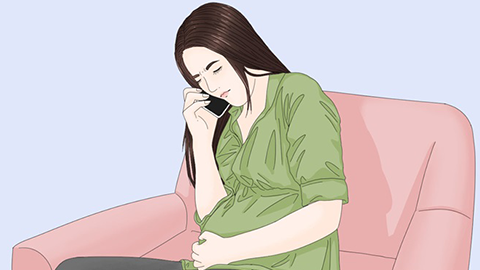What should I do if there is still residue one month after a miscarriage?
In general, "ren liu" refers to an induced abortion. Residual tissue one month after the procedure may be related to factors such as uterine atony, incomplete abortion, endometritis, intrauterine adhesions, or uterine malformations. It is recommended to seek timely medical attention and undergo treatment under the guidance of a qualified physician, including general care and medication therapy. A detailed explanation is as follows:

1. Uterine Atony
Patient factors such as physical weakness, mental stress, or excessive fatigue might weaken the contractility of the uterine smooth muscle, affecting the expulsion of intrauterine contents. It is recommended to maintain a reasonable rest and activity schedule post-surgery, avoid excessive fatigue, and promote physical recovery.
2. Incomplete Abortion
Inappropriate surgical techniques or incomplete curettage might result in residual embryonic tissue remaining in the uterus. It is recommended to undergo abortion procedures at qualified medical institutions and schedule regular follow-up visits post-surgery to ensure complete abortion.
3. Endometritis
Endometritis typically occurs due to infection of the endometrium by pathogens such as bacteria or viruses. Inflammation can cause endometrial adhesions, affecting normal shedding and renewal of the endometrium, leading to residual tissue. It is commonly accompanied by symptoms such as pelvic pain, increased vaginal discharge, and heavy menstrual bleeding. Treatment usually follows medical advice using medications such as cefuroxime sodium injection, azithromycin dispersible tablets, and tinidazole injection.
4. Intrauterine Adhesions
Intrauterine adhesions are usually caused by damage to the endometrium. Partial or complete cervical obstruction affects the discharge of intrauterine tissue, resulting in residual material. Symptoms generally include menstrual irregularities and cyclic abdominal pain. Treatment should follow medical guidance using medications such as roxithromycin tablets, ibuprofen sustained-release tablets, and cefradine capsules.
5. Uterine Malformations
Uterine malformations are typically caused by congenital abnormalities in uterine development. These malformations may lead to irregular surface areas of the endometrium, a narrow cervix, or low cervical positioning, affecting tissue expulsion. Symptoms may also include dysmenorrhea and infertility. Under a physician's recommendation, medications such as progesterone capsules, dydrogesterone tablets, and vitamin E soft capsules may be used for treatment.
It is recommended to visit qualified hospitals and undergo induced abortion procedures under the guidance of professional physicians to ensure the effectiveness and safety of the surgery. Postoperative care should include adequate rest, avoiding excessive fatigue, and maintaining mental relaxation to promote recovery.




